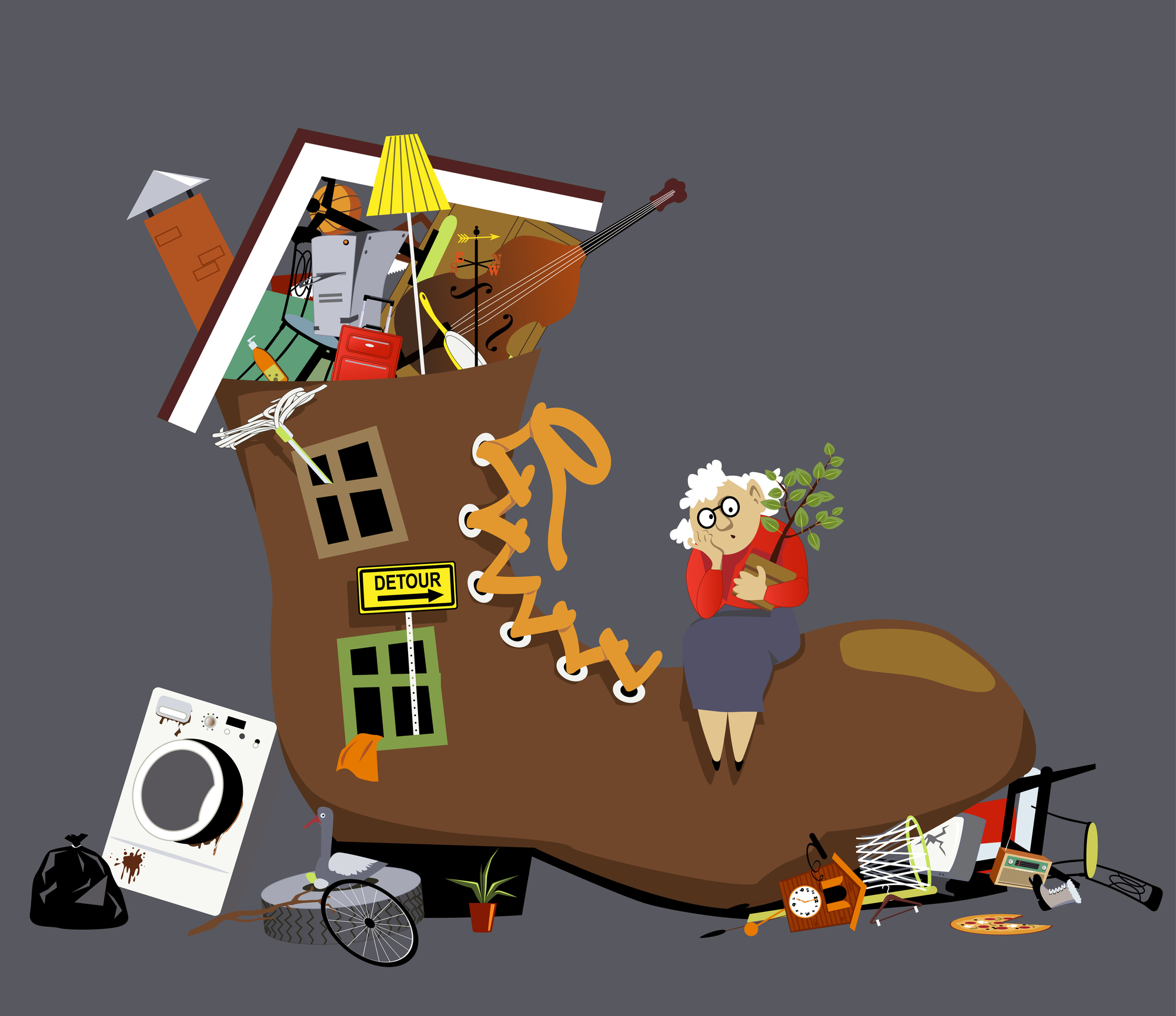Hoarding

Many people have a closet full of junk that they’d like to get rid of at some point, but sometimes our love of stuff can lead to a greater problem, such as hoarding. This can be especially true of elderly people, since they normally have a lot of things that, in their minds, have some degree of significance to them.
A study performed by Johns Hopkins showed that around 4% of the overall population shows some sort of hoarding behavior, but that number increases to 6.2% in those aged 55 or above. Hoarding also comes with its own unique set of troubling perils. While some people may seem hoarding as humorous or harmless, it can actually be dangerous or a sign of trouble. For example, hoarding poses physical dangers to an individual—like an increased risk of falls because a room is filled to the brim with clutter, and by creating hazardous or unsanitary conditions. Hoarding may also indicate the presence of Alzheimer’s, dementia, or other mental illness.
Soon, hoarding disorder is going to get its own category, so it may be easily identified and diagnosed independently of obsessive-compulsive disorder or other sicknesses. The fact is that the behavior exhibited by hoarders can cause them much distress or threaten their health or that of others.
The new criteria for diagnosing hoarding disorder will include the following:
- Ongoing difficulty letting go of personal possessions, regardless of value
- Strong urges to save items, and/or significant distress at the thought of discarding
- These symptoms lead to a level of clutter so extreme that a home or office is rendered unusable
- The hoarding can’t be attributed to another medical condition or psychological disorder
If you have a loved one suffering from hoarding disorder, the consequences can be emotional, physical, and even financial or legal. However, with much better information, understanding about the causes and symptoms of hoarding, and resources available for treatment, it will be much easier for families and friends to get a hoarder the help that they need.
As we stated above, hoarding goes above and beyond large collections of normal items (like baseball cards, dolls, etc.), and has evolved into a much larger, more dangerous issue. It can be painful to see or watch someone we love struggling in that way, even if they themselves do not notice it. However, with a little help from those they love, hoarders can start on the road toward recovery, and living a more normal, happier, and healthier life.